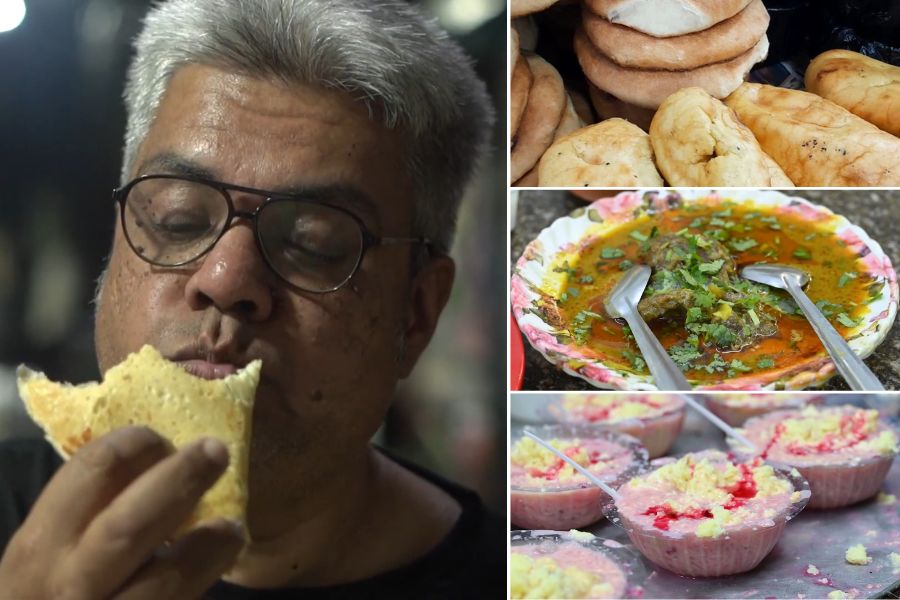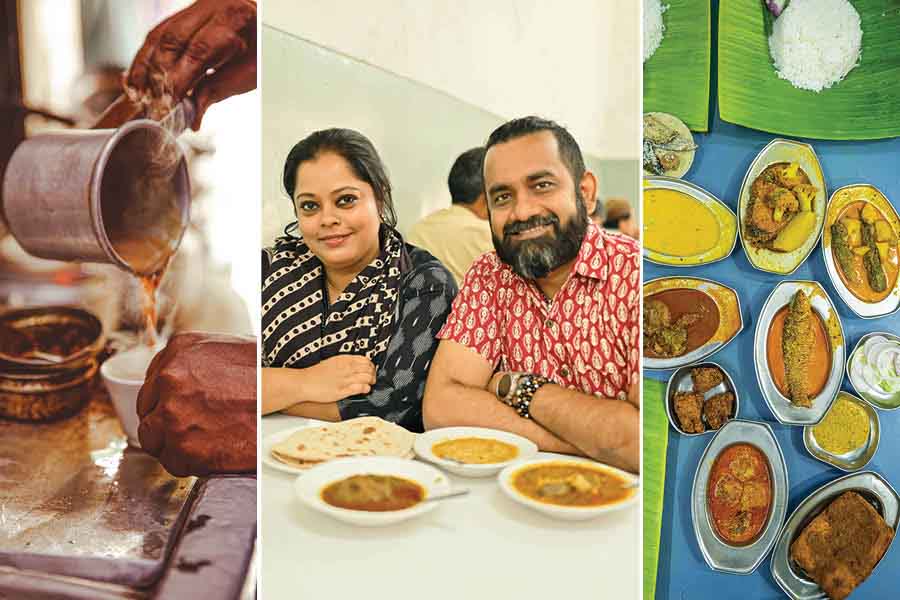In the street opposite the iconic Jama Masjid in erstwhile Shahjahanabad (now Old Delhi), it isn’t the bustle or the din of the crowd, or the smell of the food that draws your attention first. It is the colour and texture of all the food on display at the city’s famous food gully, especially if you are there early in the evening during the month of Ramzan when many break their day-long fast.
However, even outside the Holy Month, the street opposite gate 1 of Jama Masjid is a popular destination to sample Delhi’s street food offerings. The array of colours of the food in innumerable makeshift and permanent stalls and shops will dazzle your eyes first, and the aromas are soon to follow.
Fruits and sharbats, to the green dhaniya-flavoured kebabs, brown mutton seekh kebab and orange-brown chicken tandoori all put together make Jama Masjid food street an arena of vibrant energy that one who loves food cannot ignore.

The street opposite gate 1 of Jama Masjid is a popular destination to sample Delhi’s street food offerings
Any city that has a long history, is sure to have one or more food streets selling Mughlai and Awadhi favourites, but Delhi’s Jama Masjid khau gully is distinctive. This is perhaps one of the few food street in India dating back to the 17th century, when the seat of Mughal power was the Red fort just a few minutes walk away. It is reasonable to imagine that this food street has seen Delhi of the 17th century when it was an international city frequented by both Europeans and Asians.
Before you navigate your way through the culinary offerings of Jama Masjid, a few things to keep in mind — browse through as many food stalls as you wish, but be selective in tasting the food; second, the street allows only two-wheelers so walking around is your best option; third, if you are picky about calories or expecting star-restaurant level service and hygiene then this food walk is not for you; lastly, if you are a vegetarian then your options are limited but not unfair.
A nutty affair
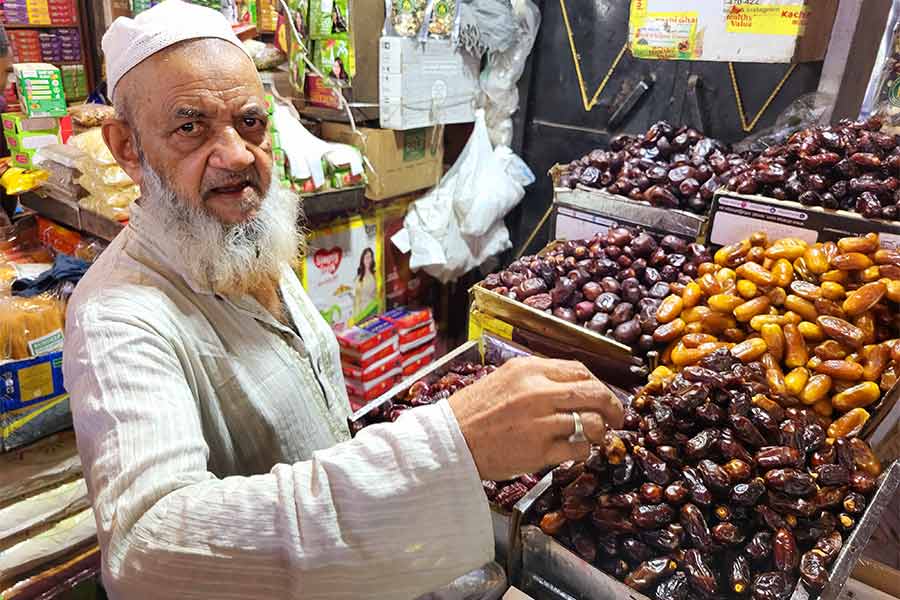
The first thing to catch your eye is the row of dry fruit stalls on the Jama Masjid side
The first thing to catch your eye is the row of dry fruit stalls on the Jama Masjid side. This is an exotic collection of known and unknown dry fruits, sourced from various places including Kabul and Kashmir. Apart from the regular cashew, almonds, pista and walnuts, there are various other options including Brazil nuts, apricot, dried blueberries, black raisins, dried cranberries, and dried figs as well as dates in many shapes, colours and sizes. This is one of the biggest open dry fruit retail markets in the region.
The Delhi fried chicken
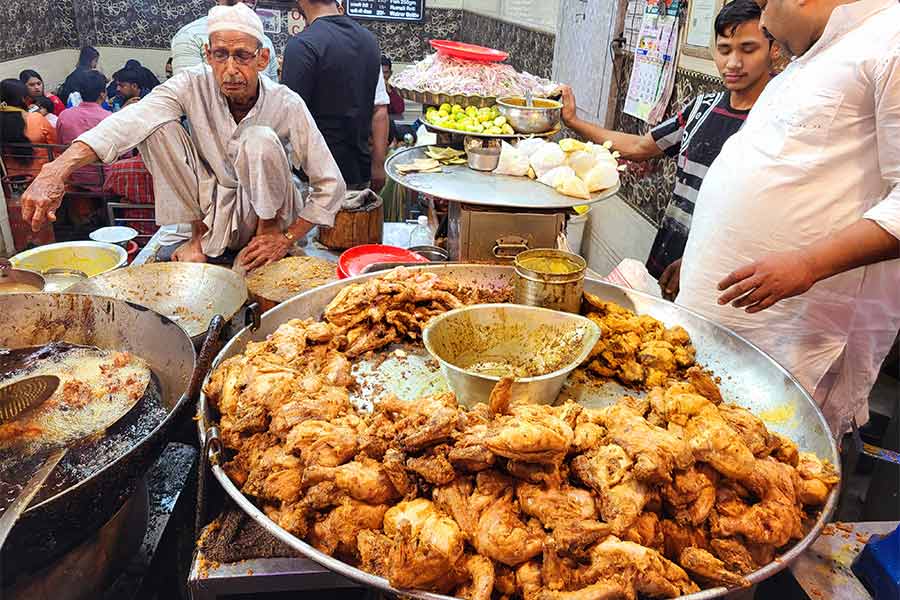
Haji Mohammad Hussain (in picture) opened a small shop selling fried chicken almost 45 years ago, which has now attained nationwide fame
More than 45 years ago, when most Indians had probably not even heard of the name KFC, a man named Haji Mohammad Hussain opened a small shop selling fried chicken in the street and soon became a legend for his extraordinary culinary skill of making crispy Indian-style fried chicken and fish.
Today, his eatery is a landmark on this street. It sells thousands of plates of fried chicken to customers, many who have been visiting this shop for generations. I was lucky to find Haji sahab in front of the shop, sitting on his haunches on a low wooden platform, and entertaining at least 30 customers with his young team.
A large frying pan of boiling oil was placed before him, ready for the large chicken pieces marinated with secret spices. The little restaurant also has covers for family dining and even on a sultry summer evening, it was occupied to near full capacity. The deep-fried goodies were flying off the shelves as soon as they were taken out of the frying pan.
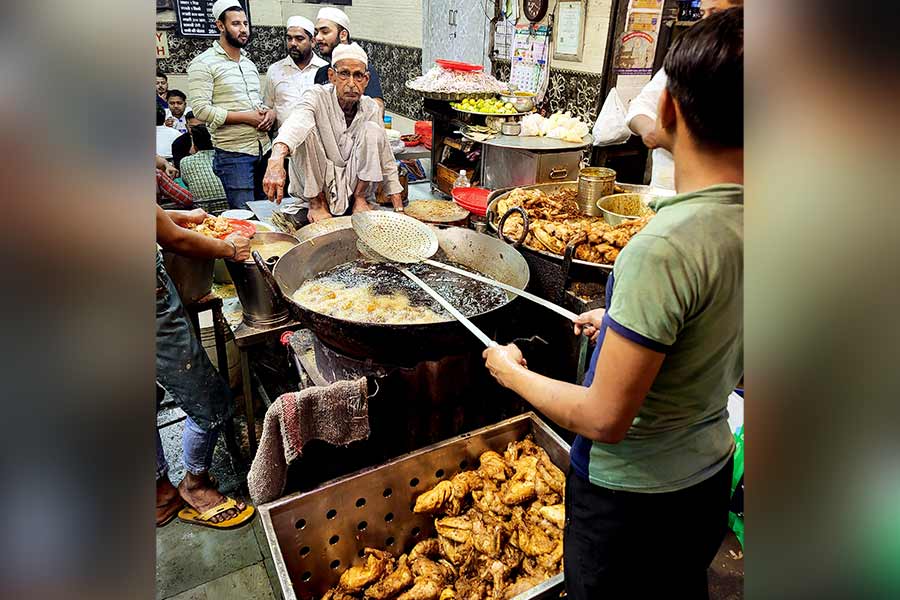
For Haji sahab, however, nothing seems more important than concentrating fully on his job. My appreciative comment of “Chacha, you are India famous” had little impact — or at least, did not show on his face. He probably thought of me as another self-proclaimed food blogger, and after a small smile gave me a stern look and went back to his job. Evenings are peak business time and the street before Jama Masjid was beaming with crowds.
It is important to note that Haji sahab’s fried chicken success inspired incalculable numbers of restaurants across Delhi to introduce the dish. Today, even in the immediate area, most of the fried chicken and fried fish shops try to replicate his culinary secret. However the rush and booming cacophony of customers in front of his shop shows why he is a legend.
Kebab tales
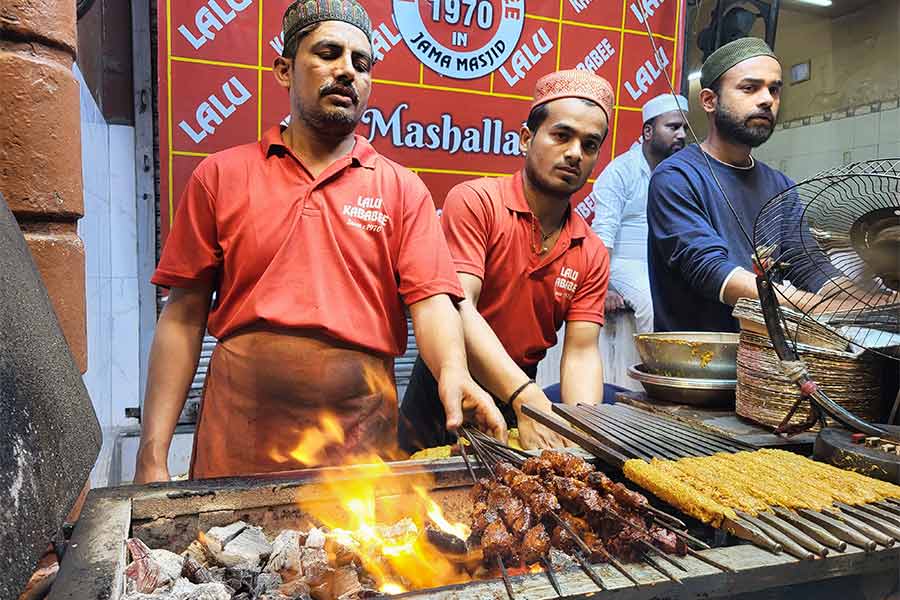
One of the big draws of the Jama Masjid's food street are the succulent kebabs
My good friend Ajmal who is from UP, but now settled in Gurgaon for many years, recommended the kebabs from Qureshi, one of the prime attractions of the street.
I had enough reasons to get myself perplexed to find there are more than three kebab shops all with live counters and the name Qureshi. So I called Ajmal from one such Qureshi, which wasn’t as crowded, and asked whether I was at the right place. My friend warned me about going to a wrong Qureshi and pointed me to the right one — the one right opposite the old Meena Bazar is the original Qureshi, he said.
Qureshi is famous for soft and tender mutton kebabs. They also sell chicken and buff kebabs, all sold with a side of onions, and mint-coriander chutney. The best thing to pair with these succulent kebabs is a rumali roti.
The stars of the street
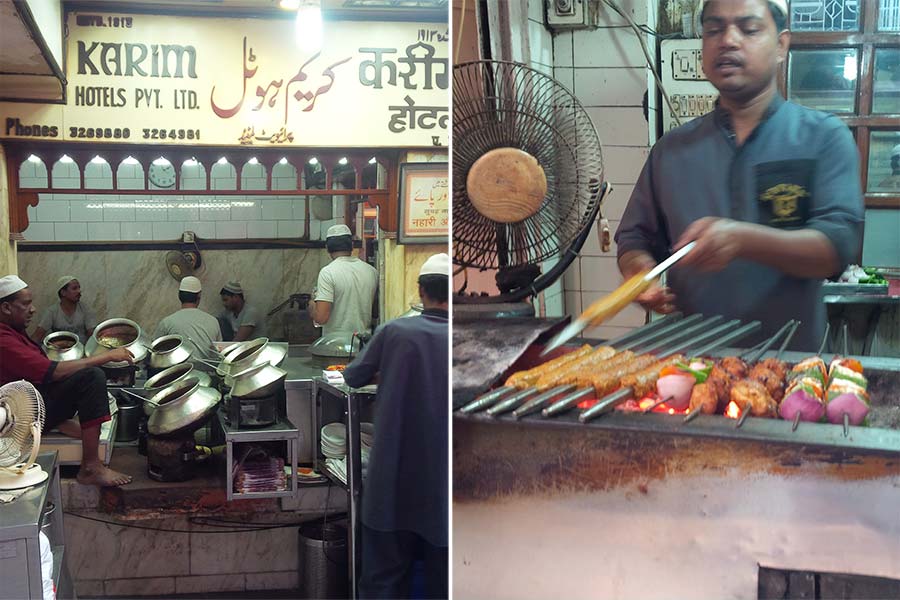
In Delhi, the most famous, and perhaps a tad overhyped, eatery in the Jama Masjid areais Karim’s
Wikimedia CommonsIn Delhi, the most famous, and perhaps a tad overhyped, eatery in this zone is Karim’s. Delhi’s Karim’s is good only for a handful of items like the Mutton Dada Kebab, Chicken Dahi Kebab. For lovers of Kolkata’s Awadhi biryani, the popular Karim’s biryani might not make the cut.
However Karim’s is not the only star of this narrow road. There are at least 10 more eateries which have rich history and a long list of customers, who have been visiting for generations.
There stands Al-Jawahar, a shop known for its Changezi Chicken, a fusion dish from central Asia. Some locals also pick Al-Jawahar for their fill of nihari. Legend has it that the shop is named so because Jawaharlal Nehru used to order chicken from here and would even visit it under the cover of security.
I found my solace in Aslam Chicken, known for its Butter Chicken, which is very different from the usual tomato-based gravy one is used to expecting. At Aslam Chicken, the Butter Chicken is a dish of tandoor-cooked chicken pieces slathered in hot butter. Like many other shops in the street, the kebabs are slow grilled on open charcoal or sigri. The meat is loaded with herbs and spices and placed on the burning coal with oil and ghee. If you are someone who doesn’t count calories in every bite, then this is surely something to sink your teeth into.
No mention of a food trail in Jama Masjid is complete without mentioning nihari. A lamb or mutton stew that has its origins in Awadhi Lucknow, this slow-cooked curry is a favourite for many. I looked at the famous Haji Shabrati Nihari Wala, which sells nihari with a special khameeri roti. Unfortunately, this time I had to move on since the shop was very crowded.
Sharbats and sweet endings
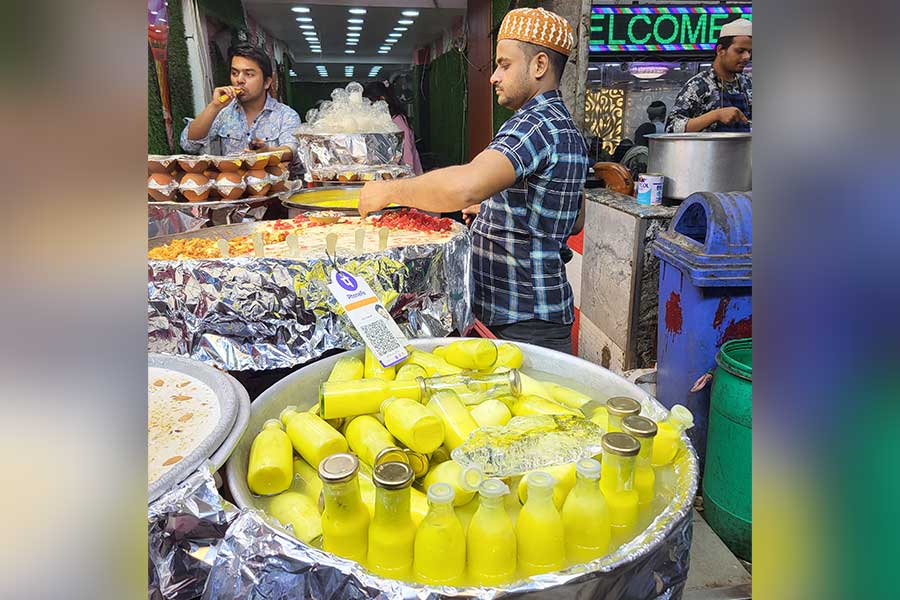
A shop selling cold beverages
I soon realised that this street is not only a paradise of food, but also sells an array of traditional Indian beverages and sweets.
The popular Mohabbat e Sharbat or Mohabbat ka Sharbat — a drink made with milk, rose syrup and chunks of watermelon — is usually a Ramzan special fixture in most places, but here it is available outside of the time as well. Another hot selling beverage is the yellow coloured badam sharbat sold in glass bottles. A point to note for the beverages sold here is that all are unbranded, so the water quality cannot be taken for granted.
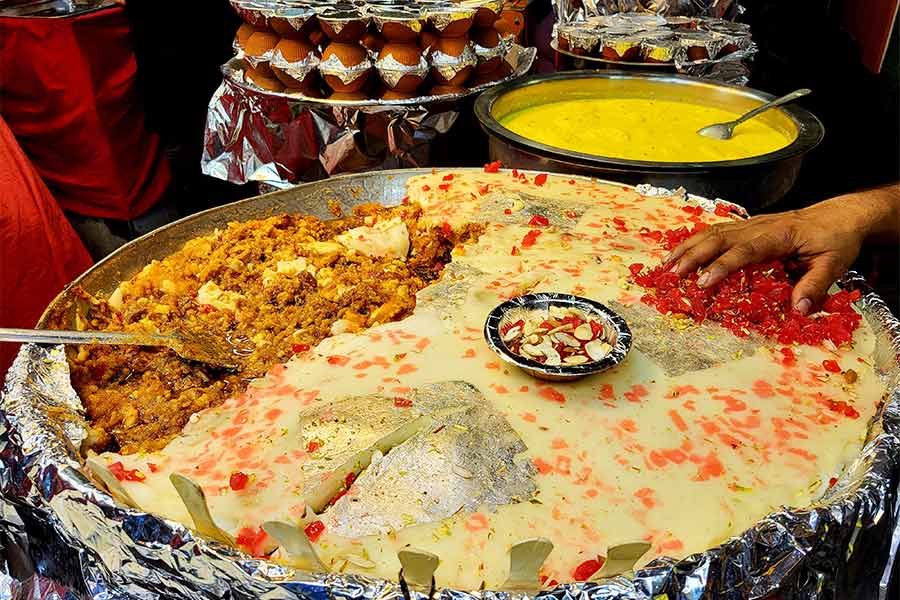
The Shahi Tukda at Shahi Tukra Cool Point
The Shahi Tukra Cool Point is a small but popular place for sweets and cold beverages. Attracted by its bright silver-and-yellow topping of a dessert placed in a large utensil, I rushed to the shop to find out the name. It was Shashi Tukda, I was informed.
Having had the sahi tukda sold in various shops in Kolkata — a milk-based dessert with pieces of fried bread — I had enough reason to not believe the seller. However, thanks to an article written by my friend Indrajit Lahiri of Foodka fame, my misgivings about the Delhi-wala Shahi Tukda were cleared.
Here in Delhi, the bread in the shahi tukda is mashed and given the form of a soft cake richly garnished with dry fruits and malai.



